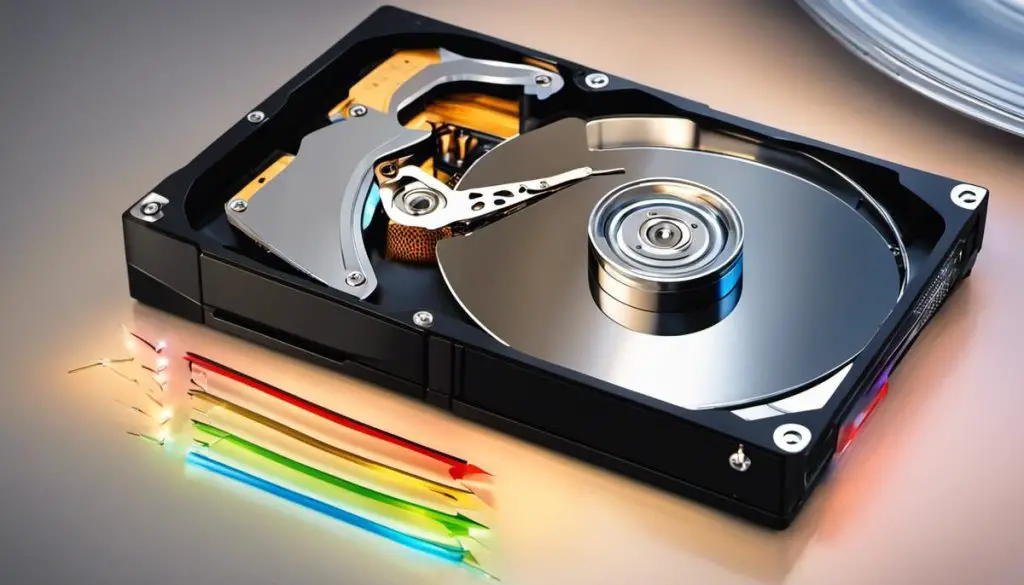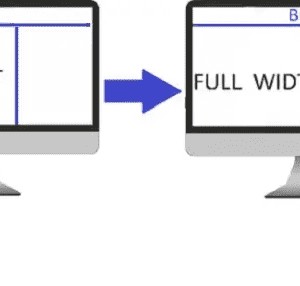One concern that often strikes trepidation into the hearts of linux users is a disk read or write error. This seemingly difficult problem typically emerges with warnings such as ‘attempt to read or write outside of disk ‘hd0’.
This article intends to illuminate what this means, why it occurs, how to identify it, and, most crucially, how to solve it, demystifying the enigma of ‘hd0’.
With simplified explanations and practical measures, you will expand your understanding of disk functions, enhance your diagnostic skills, and learn effective solutions.
Table of Contents
Disk Read/Write Error Fundamentals
Understanding Disk Read and Write Errors
Disk read and write errors occur when your computer has difficulty accessing or manipulating data on a disk.
This can be caused by physical damage to the disk, a problem with the disk’s file system, or software errors.
A disk read error can prevent a computer from starting or running correctly, completing file processes or recognizing and reading data.
A disk write error, on the other hand, can prevent a computer from saving or modifying files.
When you see the error message ‘Attempt to read or write outside of disk ‘hd0’, it indicates that the system is trying to access a location on the disk that doesn’t exist or isn’t available.
This error generally happens at boot time and is usually associated with the bootloading process.
Causes of Disk Read and Write Errors
These errors can occur for a variety of reasons. Physical damage to the disk, such as scratches or contamination, can make it impossible for the read/write head to access the data.
In some cases, the disk may be perfectly intact, but the file system (the software that controls how data is stored and accessed on the disk) may be corrupted or improperly configured.
Software errors are another common cause. Software controls how the operating system interacts with the disk, so if there is an error in the software, it can result in disk read and write errors.
This includes problems with the system’s BIOS configuration, particularly if the system’s hard disk settings are mismatched with the physical disk itself.
Potential Solutions to Disk Errors
There are various solutions to fix these disk errors. First, a simple system reboot may resolve the issue temporarily.
If the error persists, one can use utilities like CHKDSK on Windows or fsck on Linux to identify and optionally fix any errors or corruptions on the disk.
Another common solution is to verify the BIOS settings. Ensuring that the hard disk settings match the actual hardware can often resolve these errors.
This might involve changing the disk’s data mode from AHCI to IDE or vice versa, or adjusting other settings related to how the system accesses the hard drive.
If physical damage is suspected, data recovery software may help to retrieve as much data as possible from the disk. However, if the disk is severely damaged, professional data recovery services might be needed.
Keep in mind that regular backups are the surest guard against data loss from disk read and write errors. While these errors are often fixable, the risk of losing data can be minimized by keeping a current backup of all important files.

Understanding ‘hd0’
‘hd0’ is an important term that you’re likely to encounter if you’re dealing with disk-related operations, particularly in the Linux operating system.
Let’s begin by understanding what it means. In Linux, ‘hd0’ represents the first hard drive recognized by the system.
Disk naming in Linux starts from ‘hd0’ for the first hard drive, ‘hd1’ for the second, ‘hd2’ for the third, and so on.
This naming convention is primarily used in GRUB (Grand Unified Bootloader), the default bootloader for many Linux distributions.
Functioning of ‘hd0’
The primary function of ‘hd0’, in its context, is to act as an identifier or pointer to a specific hard disk. It helps the bootloader and the operating system to understand where to find necessary files during booting and other disk operations. In most cases, ‘hd0’ houses the operating system files, given it usually points to the primary disk. Other disks (hd1, hd2, etc.) generally serve as additional storage or may contain other separate operating system installations.
Role in Disk Read/Write Errors
Now, coming to disk read and write errors related to ‘hd0’, the phrase “Attempt to read or write outside of disk ‘hd0′” usually appears when there’s an issue with your disk or partition layout, or with the GRUB configuration itself. This alert is a protective measure to prevent your system from writing or reading data to or from areas that fall outside your disk’s size limit, which could potentially lead to severe data corruption.
Understanding how ‘hd0’ works and its role in the operation of your hard drive is essential for any troubleshooting process.
Knowing its significance will help decipher error messages and guide you in the direction of resolution.
Both the hardware state of your disk and software configuration of your system are things to consider when encountering errors with ‘hd0’.
The culprit could be anything from a physically failing disk to a GRUB misconfiguration.

Diagnostic Skills For Disk Errors
Use Built-In Windows Tools
Start with the built-in diagnostics tools provided by your operating system.
In Windows, this is “chkdsk”. Open command prompt as administrator by searching for “cmd”, right-clicking on Command Prompt and selecting Run as administrator.
Enter “chkdsk /f/r” and press Enter.
This will check your hard disk for errors and attempt to repair any it finds.
Deploy Third-Party Tools
If Windows diagnostics don’t resolve the issue, there are third-party tools available such as CrystalDiskInfo or HD Tune that provide deeper scans and more detailed reports of your hard drive’s health.
Download and install one of these programs, then follow their prompts to scan your hard disk.
BIOS Settings
If hard drive diagnostics come back clean but you’re still experiencing the issue, it could be due to faulty BIOS settings.
Restart your system and enter your BIOS setup (Usually by pressing F2, F10, or DEL on boot). Check the hard disk settings and particularly ensure that the hard disk order is correct. The disk shown as ‘hd0’ should be the disk from which you’re trying to boot the system.
Hard Drive Replacement
If testing shows a significant number of bad sectors or other physical issues, you might need to replace the hard disk.
Backup any important data if possible, purchase a new disk and physically replace the old one. After replacing the disk, you’ll need to install an operating system and restore your backed-up data onto the new hard disk.

Practical Fixes for Disk Read/Write Error (hd0)
Understanding the ‘hd0’ Disk Error
The ‘hd0’ disk error usually shows up during the booting stage of much Linux-based operating system, including Ubuntu.
This error indicates that the system is attempting to read or write data outside of your hard drive’s disk space, which might be caused due to incorrect boot sequence, damaged boot files, or disk errors.
Here are various methods you can use to resolve the ‘hd0’ disk error:
Method 1: Restart Your System
Often, the first step to fix the disk error is to restart your computer.
It may be a temporary glitch that a system restart can fix. If the ‘hd0’ disk error persists after a system restart, proceed with the following methods.
Method 2: Adjust Boot Sequence
Sometimes, the problem can come from an incorrect boot sequence.
To correct this, you’ll have to modify your system’s BIOS settings. During the booting stage, quickly press the key (such as F2, F10, or Del) that allows you to enter the BIOS settings.
Look for the boot sequence option and ensure that the correct boot drive is set as the first boot device.
Method 3: Repair Boot File
If the problem isn’t from the boot sequence, then it may be due to faulty or corrupt boot files.
If you suspect this to be the case, you will need a bootable USB or DVD of your respective Linux distribution.
Insert the bootable media into your computer. Restart the computer, boot from the USB or DVD, and enter the rescue mode. Follow the instructions to fix any damaged boot files.
Method 4: Check Disk For Errors
If your boot files are not the problem, then the issue could be due to errors on your hard disk.
Most Linux distributions come with ‘fsck’, a utility that you can run to check for and fix disk errors.
Run the ‘fsck’ command on your hard drive, which is generally ‘/dev/sda’ for the first hard disk.
Method 5: Reinstall Operating System
If none of the above methods solve the problem, the last resort may be to reinstall your operating system entirely.
Be advised that doing so will erase all data on your computer. Before proceeding, make sure you have a backup of all your important files and documents.
After backing up your files, insert a bootable USB or DVD and follow the instructions to reinstall the Linux distribution.
After the installation is complete, restore your files from the backup.

Demystifying the ‘hd0’ disk error and understanding how to fix it doesn’t have to be a daunting task.
Deepening your comprehension of ‘hd0’ and the underlying principles behind disk read/write errors helps you fearlessly handle such problems.
Given the right diagnostic tools and techniques, you can successfully pinpoint, and with useful solutions at hand, efficiently solve this disk error.
Crafting proficiency in diagnosis and remedy today can save you from significant trouble tomorrow. May this knowledge empower you to relentlessly pursue seamless digital experiences, tackling problems with informed confidence.






